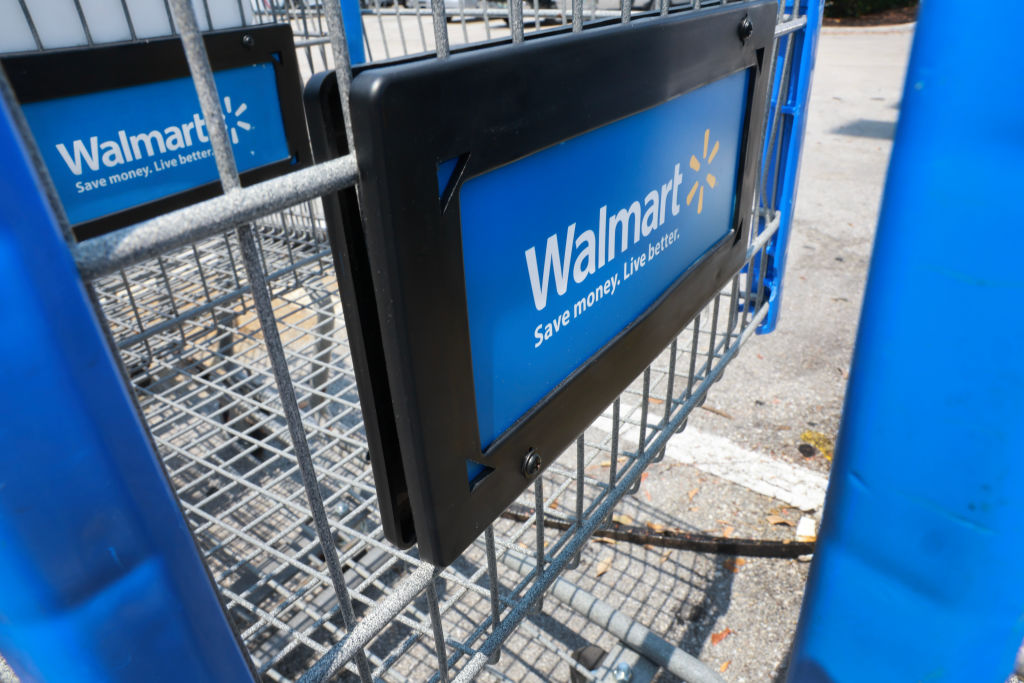8 Bargain Dividend Stocks in a Pricey Market
Value-oriented investors have faced slim pickings in the U.S.


Value-oriented investors have faced slim pickings in the U.S. stock market for some time. After more than eight years of gains, few truly cheap stocks remain, at least as measured by price-earnings ratios and other classic yardsticks. That’s true for many other investors, too, including those who seek attractive dividend yields. So we set out to find companies that meet the YARP test—that is, they deliver “yield at a reasonable price.” The basic idea: Look for companies that sell for relatively fair valuations, and make sure that they pay decent—and rising—dividend income to provide a potential buffer for when the market turns ugly, as it inevitably will.
The question, of course, is what constitutes a reasonable valuation these days. We weren’t afraid to consider companies with P/Es above the market average if we believed the businesses had healthy long-term growth prospects. Half of our eight picks trade at P/Es that are higher than that of Standard & Poor’s 500-stock index (18, based on estimated earnings over the next 12 months).
Most important, we focused on high-quality companies. All of our picks are leaders in their industries. Even so, they’d all make better buy-and-hold investments if the stocks were cheaper. Investors who are content to wait for a market downturn might want to keep this list handy for when that day comes.
Prices and data are from August 4, 2017. Dividend growth rates are annualized. Click on ticker-symbol links in each slide for current prices and more.
TAKE THE QUIZ: Test Your Bull Market IQ

Chubb
- Symbol: CB
- Share price: $149.80
- Market value: $69.9 billion
- Price-earnings ratio: 15
- Dividend yield: 1.9%
- 10-year dividend growth rate: 10%
Insurance isn’t exactly a sexy industry, but when an insurer is well managed, the business can be lucrative. Case in point: Insurance has long been the core operation of Berkshire Hathaway (BRK-B), Warren Buffett’s holding company. Chubb may not be as well known as Berkshire’s Geico unit, but it has a sterling reputation on Wall Street. The current Chubb was formed in January 2016 by the merger of two giants: Chubb Corp., best known for providing specialty insurance for wealthy individuals, and ACE Ltd., a global underwriter of property-and-casualty insurance for businesses. ACE, headquartered in Switzerland, bought Chubb but kept the Chubb name.
Insurance is largely a commodity business, meaning there’s not much difference in the basic product from one firm to another. The trick is to price policies smartly enough to be competitive while also assuring profitability despite inevitable claims. That’s where both ACE and the old Chubb excelled. And the merged company is off to a strong start. A key gauge of an insurer’s operations is the “combined ratio.” It measures the total of claims paid out, plus expenses, against premiums earned. So the lower, the better. In the second quarter, Chubb’s combined ratio was a healthy 88.0%, down from 91.2% a year earlier. The results underscored the new firm’s status as “one of the strongest P&C insurance franchises in the world,” says research firm Morningstar. Even so, Chubb’s near-term earnings growth rate is expected to be modest because of intense industry competition. But one of the goals of the merger was to cut overall expenses. That should free up more cash for shareholders, which is likely to mean higher dividends. Both the old Chubb and ACE had long histories of annual dividend hikes. The new Chubb’s latest increase: a 3% boost in May, to an annual rate of $2.84 per share. The stock sells for 15 times estimated earnings.

Cummins
- Symbol: CMI
- Share price: $160.16
- Market value: $26.8 billion
- Price-earnings ratio: 16
- Dividend yield: 2.6%
- 10-year dividend growth rate: 28%
Sales are picking up at industrial powerhouse Cummins. Now, the company needs to deliver earnings to match. Cummins is the leading U.S. manufacturer of engines for trucks and other heavy equipment. It also produces truck components, such as emission-control systems. A third business line is large power generators for such industries as mining and energy. All of these areas are highly cyclical, meaning they can go from feast to famine. In 2015 and 2016, Cummins's revenues were weak, in part because sales of big-rig trucks had waned. But demand has revived this year. Cummins's revenues rose 12% in the second quarter, to $5.1 billion, thanks to a 16% jump in truck-engine sales in North America and continued strength in China. In August, Cummins raised its sales growth forecast for 2017 to a range of 9% to 11%, from 4% to 7%. But the stock slumped because second-quarter earnings fell short, rising just 5%, to $2.53 per share.
Cummins's problem in the short term has been higher expenses, including rising prices for raw materials and costs for fixing some quality-control issues. The company expects the latter to ease in the second half of this year. But Cummins also warned that red-hot Chinese demand for equipment will probably cool in the near term.
Even so, brokerage Goldman Sachs says the longer-term view remains bright. A cyclical rise in sales of heavy-duty truck engines "is still in front of us," Goldman says. Ditto for major machinery upgrades in mining and energy, it says. Goldman expects Cummins's earnings to rise 19% this year and 11% in 2018.
The stock's P/E of 16 isn't dirt-cheap for a cyclical firm. But Cummins gets high marks for its technology and healthy finances. Notably, the company remained profitable during the Great Recession -- and continued to raise its dividend. In July, it hiked the payout again, by 5%, to an annual rate of $4.32 per share.

Home Depot
- Symbol: HD
- Share price: $152.75
- Market value: $183.3 billion
- Price-earnings ratio: 21
- Dividend yield: 2.3%
- 10-year dividend growth rate: 15%
As the nation’s largest home-improvement retailer, Home Depot has been a huge beneficiary of the recovery in housing since the financial crisis. Sales are on track to top $99 billion in the fiscal year that ends in January 2018, up 50% since the year that ended in January 2010. But Home Depot’s profit growth has been far more dramatic: Earnings are expected to reach $7.40 per share this year, a 370% gain since the January 2010 fiscal year. The company’s sharp focus on efficiency has allowed it to squeeze more profit from every sales dollar. Shareholders’ dual reward since 2010: a stock that had rocketed from $30 to $160 and an annual dividend rate that has surged from 90 cents to $3.56.
But in July the shares took a sudden hit after Amazon made a deal with struggling Sears to begin selling Sears’s Kenmore-brand appliances. Until recently, the home-improvement industry had been largely sheltered from Amazon’s competitive threat. Still, investors have good reasons to view a pullback in Home Depot shares as a gift. For one, appliances account for less than 8% of Home Depot’s sales. In addition, brokerage Robert W. Baird notes, the company has increasingly stressed the personal-service aspect of its business, particularly in catering to contractors and other home-improvement pros. The retailer’s Pro unit now accounts for about 40% of total sales, and it grew twice as fast as sales to do-it-yourselfers in the quarter that ended April 30. Baird sees Pro as one of Home Depot’s “most significant growth opportunities” in the next few years. Finally, the company should benefit from improved consumer spending. As more aging baby boomers stay put, home remodeling outlays should reach a record $316 billion this year, up 6.5% from 2016, according to Harvard University’s Joint Center for Housing Studies. Given Home Depot’s growth prospects, an above-average P/E of 21 is reasonable.

Intel
- Symbol: INTC
- Share price: $36.30
- Market value: $170.6 billion
- Price-earnings ratio: 12
- Dividend yield: 3.0%
- 10-year dividend growth rate: 9%
Skeptical investors have long questioned Intel's long-term prospects, given the decline of its core personal computer market. So the semiconductor giant’s second-quarter report dealt a blow to some doubters. Sales rose 9% from the same period a year earlier, to a record $14.8 billion, and the company's primary measure of earnings jumped 23%. Intel also raised its earnings estimate for the full year. The results showed that Intel is still reaping huge profit from chips for PCs, tablets and personal devices, which accounted for 55% of sales. But the surprisingly high 12% sales growth rate in that unit likely was an aberration. PCs aren't the future.
The good news is the strength in Intel's other chip sectors. Sales at the data-center group, which includes computer servers that power the internet and corporate computing, rose 9%, to $4.4 billion. That was before the July launch of Xeon, a new family of powerful server chips that are aimed at maintaining Intel's iron grip on that market. Sales at the "Internet of Things" unit (chips for "smart" appliances, for example) surged 26%, to $720 million. And the company is paying $15.3 billion to buy Mobileye, an Israel-based developer of self-driving-car technology.
All of this bolsters hopes that Intel is on the right path to a new growth phase. To be sure, "Turning a battleship like Intel takes time," says brokerage Canaccord Genuity. And the company faces heated competition on every front. But fans say the pessimists don't appreciate what Intel can achieve over the long term with its massive research spending, now $12 billion per year. With the stock selling for just 12 times estimated earnings and yielding 3.0%, Intel offers potentially generous rewards for patient investors.
TAKE THE QUIZ: How Well Do You Know Wall Street Jargon?

Johnson & Johnson
- Symbol: JNJ
- Share price: $133.18
- Market value: $358.3 billion
- Price-earnings ratio: 18
- Dividend yield: 2.5%
- 10-year dividend growth rate: 7%
As a company and a stock, Johnson & Johnson spent much of the 10-year period that ended in 2012 in the doghouse. That partly reflected the struggles of the drug industry as a whole to come up with new blockbuster medicines. It also stemmed from a long stretch of J&J product recalls from 2009 to 2012 because of quality-control issues. Since 2012, however, J&J’s profit growth has surged, and Wall Street has taken a much brighter view of the company’s potential. In July, the stock hit a record high after J&J reported strong second-quarter earnings and raised its full-year profit forecast.
Since then, the shares have pulled back and trade at a market-average P/E of 18. The bullish case centers on J&J’s broad diversification across three businesses: drugs (46% of sales); medical devices, such as surgical tools and joint replacements (36%); and consumer products, such as Tylenol and Band-Aid (18%). Drugs have been the weak spot over the past year as tougher competition has slashed sales of Remicade, a treatment for arthritis, and Invokana, a diabetes drug. But J&J is optimistic about sales in the second half of the year, citing newly approved drugs, such as Tremfya, a psoriasis treatment. J&J’s $30 billion purchase of biotech firm Actelion, completed in June, will also help. Although J&J still faces potential legal woes from its product-recall mess, brokerage J.P. Morgan Securities thinks the stock is a buy, based on expectations for “well above average” drug-sales growth through 2021. Meanwhile, income-oriented investors ought to appreciate J&J’s reliable dividend growth. The payout has doubled over the past 10 years, to the current annualized rate of $3.36 per share.

Lockheed Martin
- Symbol: LMT
- Share price: $297.00
- Market value: $85.5 billion
- Price-earnings ratio: 22
- Dividend yield: 2.5%
- 10-year dividend growth rate: 18%
Shares of the world’s biggest arms maker have jumped 18% this year, as many investors expect U.S. defense spending to rise with Republicans controlling Congress and the White House. That remains to be seen. Unless the world becomes a much safer place, however, Lockheed Martin stands to benefit over the long term from the breadth of its operations, from fighter jets and Sikorsky helicopters to missile systems and satellites. The consolidation of the defense industry over the past few decades has left Lockheed as the sole U.S. option for some weapons systems. The company has also become a Wall Street favorite for its commitment to share profits with investors via dividends and stock buybacks.
Revenues this year are expected to be near $51 billion, with the lion’s share from the F-35, the revolutionary—and controversial—fighter jet that Lockheed began delivering to the Pentagon in 2011. Increasing F-35 sales to the U.S. and its allies are expected to power Lockheed’s growth for years to come, even as President Trump puts pressure on the company to lower the cost of the jet (now just below $100 million per plane). Research firm CFRA says the stock’s above-average P/E of 22 is justified by Lockheed’s industry-leading position, “strong execution” and healthy free cash flow (cash profits after capital expenditures). Lockheed diverts much of that cash to investors: CFRA notes that buybacks have slashed shares outstanding by 36% since 2002 and that the annual dividend rate, $7.28 per share, has more than doubled just since 2011. J.P. Morgan Securities expects the dividend rate to reach $8.92 per share in 2019, an increase of 23% from the current rate.
TAKE THE QUIZ: Famous Wall Street Investing Quotes: Who Said It?

Microsoft
- Symbol: MSFT
- Share price: $72.68
- Market value: $559.6 billion
- Price-earnings ratio: 23
- Dividend yield: 2.1%
- 10-year dividend growth rate: 15%
When Satya Nadella became CEO in 2014, he promised to accelerate Microsoft’s transition from a PC-centered world to the era of mobile communications and the cloud (that is, delivering software, data storage and other services via the internet). Many investors were skeptical. But the tech titan’s most recent quarterly results show how the shift to cloud services is transforming the company—and is more than offsetting the waning PC business. Microsoft’s revenues jumped 9.1% in the quarter that ended June 30 from the same period a year earlier, led by a 97% surge in its Azure cloud-computing service for businesses. PC-related sales slipped 1% in the quarter.
Microsoft shares have been trading at record highs as more investors have piled in over the past 12 months, betting on a new era of growth for the company. The company’s broadest measure of revenues totaled $96.7 billion in the fiscal year that ended June 30, up 5% from the previous year. On that basis, earnings per share climbed 19%, to $3.31. A higher tax rate is expected to keep per-share profit in the current fiscal year at about $3.30. But analysts, on average, estimate earnings of $3.59 per share in the year that ends in June 2019. And over the longer term, Microsoft now possesses “some of the strongest fundamentals” of any of the old-guard tech giants, brokerage UBS says. A crucial question is whether Microsoft can overtake Amazon, the current leader in cloud-computing services. One risk is that the two could get into a debilitating price war. But Microsoft’s huge recurring cash stream from its still-dominant Windows computer operating system provides a financial backstop. The company has been using more of that cash to reward shareholders: The dividend has nearly doubled in five years, to the current $1.56 annual rate.

Sempra Energy
- Symbol: SRE
- Share price: $117.19
- Market value: $29.4 billion
- Price-earnings ratio: 23
- Dividend yield: 2.8%
- 10-year dividend growth rate: 10%
Sempra is a play on long-term worldwide demand for cleaner fuels, particularly natural gas. The company is best known as the parent of two major Southern California utilities: Southern California Gas and San Diego Gas & Electric. Together, they serve 25.3 million consumers. Those units will continue to provide the bulk of Sempra’s revenue and earnings in the near term, says Morningstar. And unlike the unfriendly utility regulators in some states, Sempra’s California regulator has been a “relatively constructive partner” in allowing rate increases to cover capital spending and support earnings growth, Morningstar says. That’s important as the utilities push deeper into renewable energy. San Diego G&E already derives more than 40% of its power from renewables.
But it’s Sempra’s other businesses that have the most exciting growth prospects—as well as greater risk. The company is building a facility in Louisiana to export liquefied natural gas (LNG), taking advantage of a gas glut in the U.S. and the strong overseas demand for cleaner fuels. That plant will come online in 2018. Sempra has proposed additional LNG facilities in Texas and Mexico. The company also owns utilities in Chile and Peru, and it has a 66% stake in fast-growing IEnova, which builds and operates energy infrastructure in Mexico. All told, Morningstar projects, Sempra could post 11% annualized earnings growth and 9% annualized dividend growth through 2020, “both well above its peers.” Brokerage Wells Fargo Securities predicts that the stock, which trades at 23 times expected earnings, could reach $125 within 18 months if more investors focus on the per-share value of Sempra’s individual business units.
Profit and prosper with the best of Kiplinger's advice on investing, taxes, retirement, personal finance and much more. Delivered daily. Enter your email in the box and click Sign Me Up.

-
 I'm want to give my 3 grandkids $5K each for Christmas.
I'm want to give my 3 grandkids $5K each for Christmas.You're comfortably retired and want to give your grandkids a big Christmas check, but their parents are worried they might spend it all. We ask the pros for help.
-
 If You're Not Doing Roth Conversions, You Need to Read This
If You're Not Doing Roth Conversions, You Need to Read ThisRoth conversions and other Roth strategies can be complex, but don't dismiss these tax planning tools outright. They could really work for you and your heirs.
-
 Could Traditional Retirement Expectations Be Killing Us?
Could Traditional Retirement Expectations Be Killing Us?A retirement psychologist makes the case: A fulfilling retirement begins with a blueprint for living, rather than simply the accumulation of a large nest egg.
-
 What to Do With Your Tax Refund: 6 Ways to Bring Growth
What to Do With Your Tax Refund: 6 Ways to Bring GrowthUse your 2024 tax refund to boost short-term or long-term financial goals by putting it in one of these six places.
-
 What Does Medicare Not Cover? Eight Things You Should Know
What Does Medicare Not Cover? Eight Things You Should KnowMedicare Part A and Part B leave gaps in your healthcare coverage. But Medicare Advantage has problems, too.
-
 12 Great Places to Retire in the Midwest
12 Great Places to Retire in the MidwestPlaces to live Here are our retirement picks in the 12 midwestern states.
-
 15 Cheapest Small Towns to Live In
15 Cheapest Small Towns to Live InThe cheapest small towns might not be for everyone, but their charms can make them the best places to live for plenty of folks.
-
 15 Reasons You'll Regret an RV in Retirement
15 Reasons You'll Regret an RV in RetirementMaking Your Money Last Here's why you might regret an RV in retirement. RV-savvy retirees talk about the downsides of spending retirement in a motorhome, travel trailer, fifth wheel, or other recreational vehicle.
-
 The 24 Cheapest Places To Retire in the US
The 24 Cheapest Places To Retire in the USWhen you're trying to balance a fixed income with an enjoyable retirement, the cost of living is a crucial factor to consider. Is your city the best?
-
 Stock Market Today: Dow Flirts With 40K After Walmart Earnings
Stock Market Today: Dow Flirts With 40K After Walmart EarningsThe 30-stock index briefly traded above the 40,000 mark as blue chip retail stock Walmart surged after earnings.
-
 Chubb Stock Jumps After Buffett's Berkshire Takes a Stake
Chubb Stock Jumps After Buffett's Berkshire Takes a StakeChubb stock is up on news Warren Buffett's holding company Berkshire Hathaway built a position in the insurance firm. Here's what you need to know.
